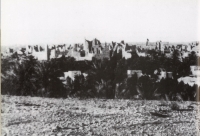
Poetry in the First Saudi State is one of the literary arts that served as a means of expression in the First Saudi State , reflecting the social, political, and religious aspects of the time. Poetry played a significant role in promoting national unity, loyalty to the state, and defending it, in addition to being a source of Saudi history. The rulers of the First Saudi State took an interest in poetry and poets, and the poetry featured a variety of themes and artistic styles. Moreover, colloqu...

The markets in the First Saudi State were commercial markets that contributed to the development of the economic movement in the First Saudi State during its rule. Their names and forms varied according to the regions of the state. Objectives of the markets in the First Saudi State The First Saudi State was able to achieve geographic and political expansion, which in turn contributed to the diversification of sources of income and the wealth of the population. This was reflected in several aspe...
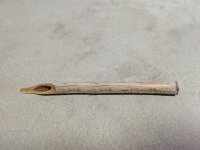
During the establishment of the First Saudi State , the people of Najd used pens to write the manuscripts in which they documented their sciences and knowledge. During that time, the name given to the pen was Qalam . However, the people of Najd used other names and attributes thereto, such as al-Oud , al-Yaraa , and al-Yara . These names and attributes were mentioned while talking. They also figured in their literary works, namely in Nabatean poetry, where al-oud was mentioned in the poem writt...
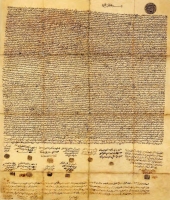
The seal of Imam Saud Bin Abdulaziz is the seal that was used by the third Imam of the First Saudi State, Imam Saud Bin Abdulaziz Bin Muhammad Bin Saud. He used this seal to sign a letter to the Governor of Levant in the year 1810. The seal is considered one of the beautiful features of the manuscripts from Diriyah , which is displayed by the Development Authority of Diriyah Gate in the Kingdom of Saudi Arabia . It contains a collection of Quranic verses, and in the center, the phrase 'His...

The Army of the First Saudi State consisted of both permanent soldiers and volunteers, upon whom the rulers of the First Saudi State relied on from in 1727 until in 1818. The army was formed to organize the state’s military affairs, defend its territories, expand its rule, and ensure its stability and security. Formation of the First Saudi State The First Saudi State relied on the Nafeer system (conscription) to build its fighting forces. This system could be voluntary or mandatory depending ...
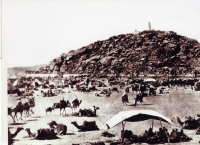
Security of Hajj in the First Saudi State refers to the security measures made by the First Saudi State in the two Holy Cities, Makkah al-Mukarramah and al-Madinah al-Munawwarah , and the roads leading to them for performing Hajj, Umrah, and visitation rituals. These measures were applied during the state's control of Hejaz, where it was also keen on providing other services to pilgrims. Dangers of the Hajj routes before the First Saudi State Hajj caravans were exposed to several dangers o...
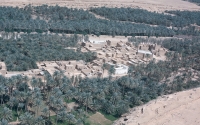
The Judicial System in the First Saudi State refers to the system adopted by the First Saudi State throughout its rule, between 1727 and 1818, to govern the various judicial tasks and affairs. It is based on the provisions of Islamic Sharia. Judges in the First Saudi State The First Saudi State has attached utmost attention to judges who ranked second after the Imam and the governor. This rank stems from the work assumed by the judge and his direct connection with the public and personal intere...
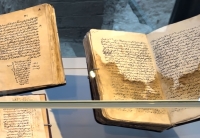
The Manuscript of Najdi Chronicles (Makhtutat al-Akhbar al-Najdiya) is a manuscript that documents the chronicles of Najd from 1446 to 1871, focusing particularly on the First and Second Saudi States and the events that took place between them. Author of the Manuscript of Najdi Chronicles The Manuscript of Najdi Chronicles was authored by Mohammed Bin Omar al-Wuhaibi al-Fakhri (1772–1861). He was born in the town of al-Tuwaim in the Sudair region, where he grew up and studied the Quran. In 18...
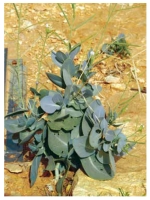
The Production of Ink in Najd refers to the methods of ink-making that were passed down among students of knowledge and scribes in Najd during the era of the First and Second Saudi States through practice and tradition. At that time, the Najdi environment was rich in various types of plants and trees from which different kinds of ink were extracted. In addition, they relied on the residues of fire and smoke. Their ink production methods were primitive and simple, without precise measurement...
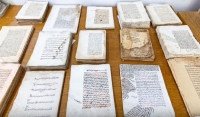
Paper in Najd is the paper used for writing manuscripts, documents, and wills in Najd during the First and Second Saudi States. The raw materials for its production, such as trees and plants, were not abundantly available in Najd to allow for local manufacturing. This made importing it from outside Najd more convenient and cost-effective for scribes and scholars. The names and types of paper in Najd varied depending on their sources and uses. Names of paper in Najd During the era of the F...
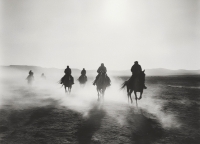
Equestrianism in the First Saudi State was an integral part of the social and cultural identity of the state. It was a skill that combined both the physical strength and spirit of the rider and the horse simultaneously. In its broader sense, it differed from the modern understanding, as it referred to a warrior who possessed strong determination and the ability to control the horse during battles. Interest of the Imams of the First Saudi State in equestrianism Imam Muhammad Bin Saud, the founde...
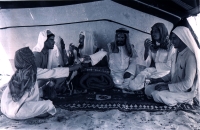
The social values in the First Saudi State are a system of social and moral values followed by the First Saudi State , which was founded by Imam Muhammad Bin Saud in 1727, with Diriyah as its capital. Generosity in the First Saudi State Generosity is considered one of the social values that characterized society in the First Saudi State, and this was reflected in their poetry, stories, accounts, and narratives of that time. What contributed to spreading the value of generosity among the members...